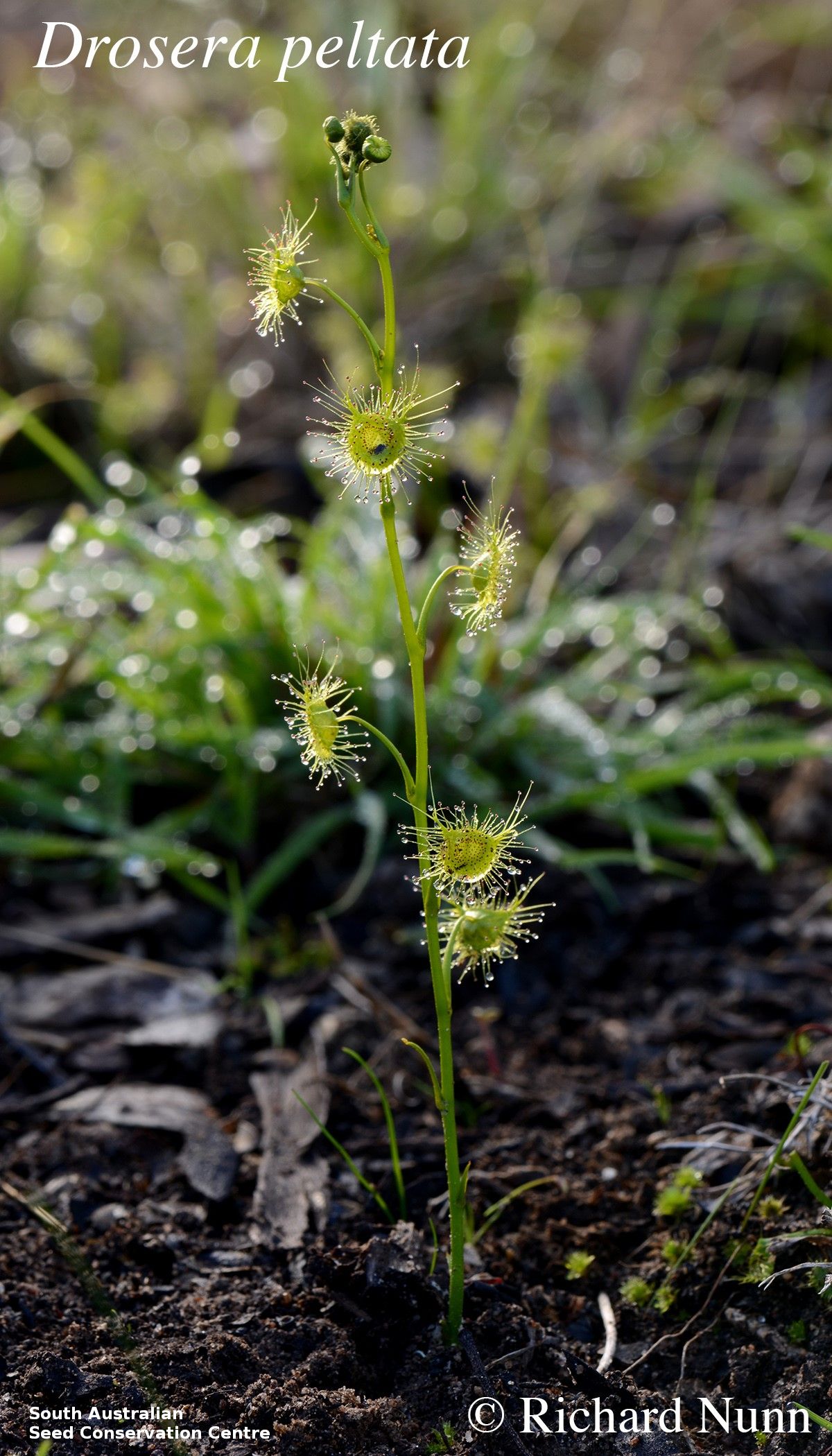
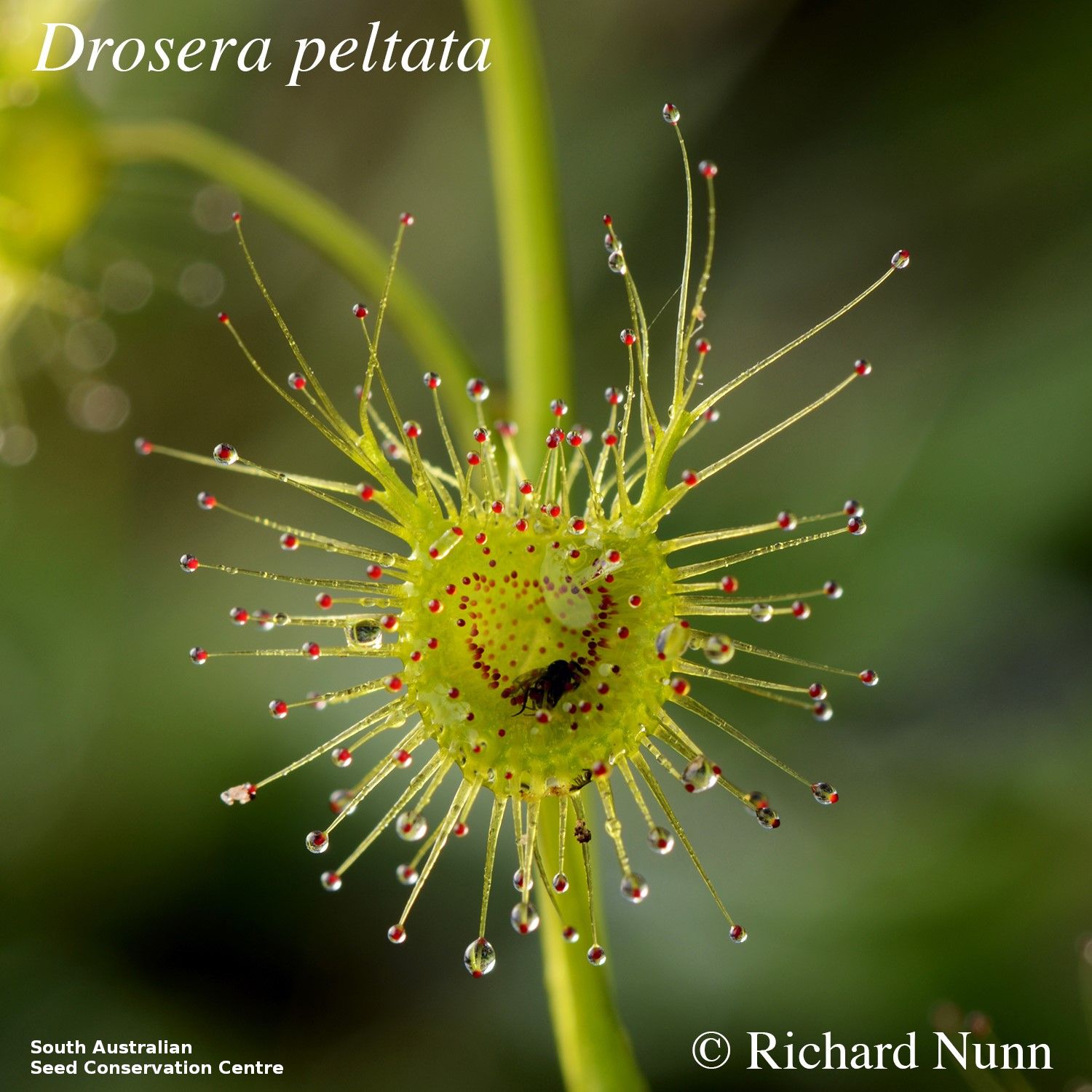
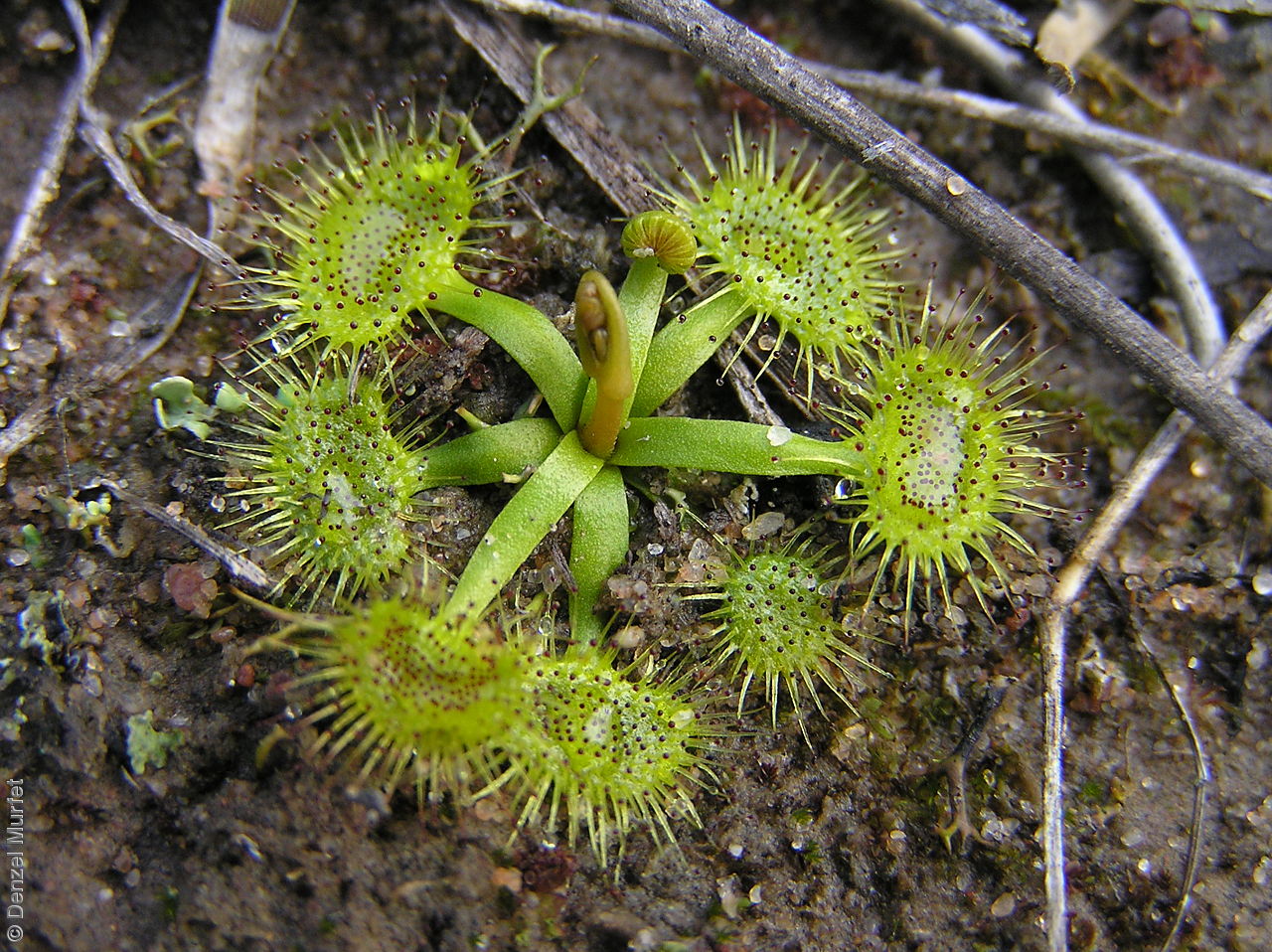
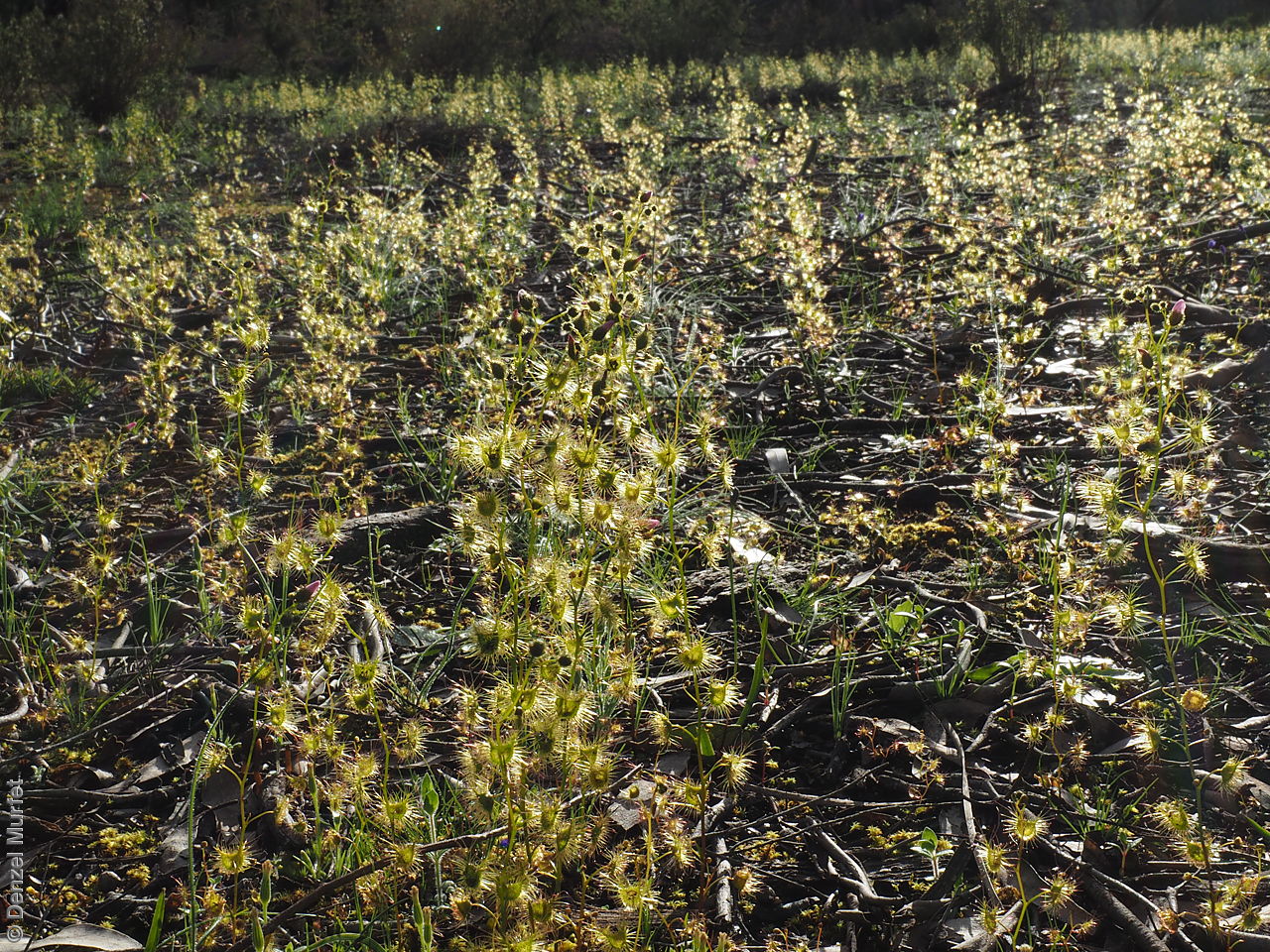

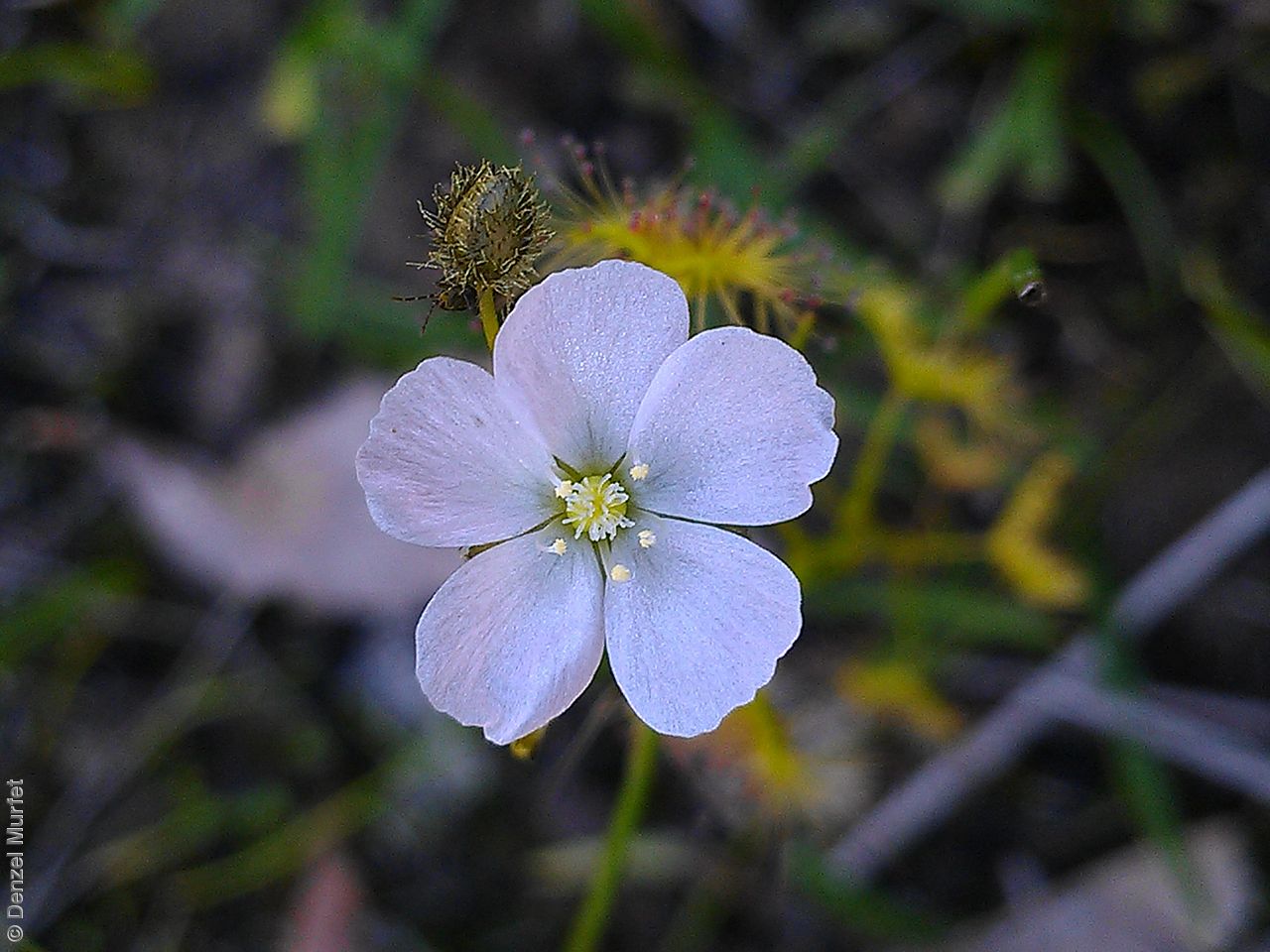
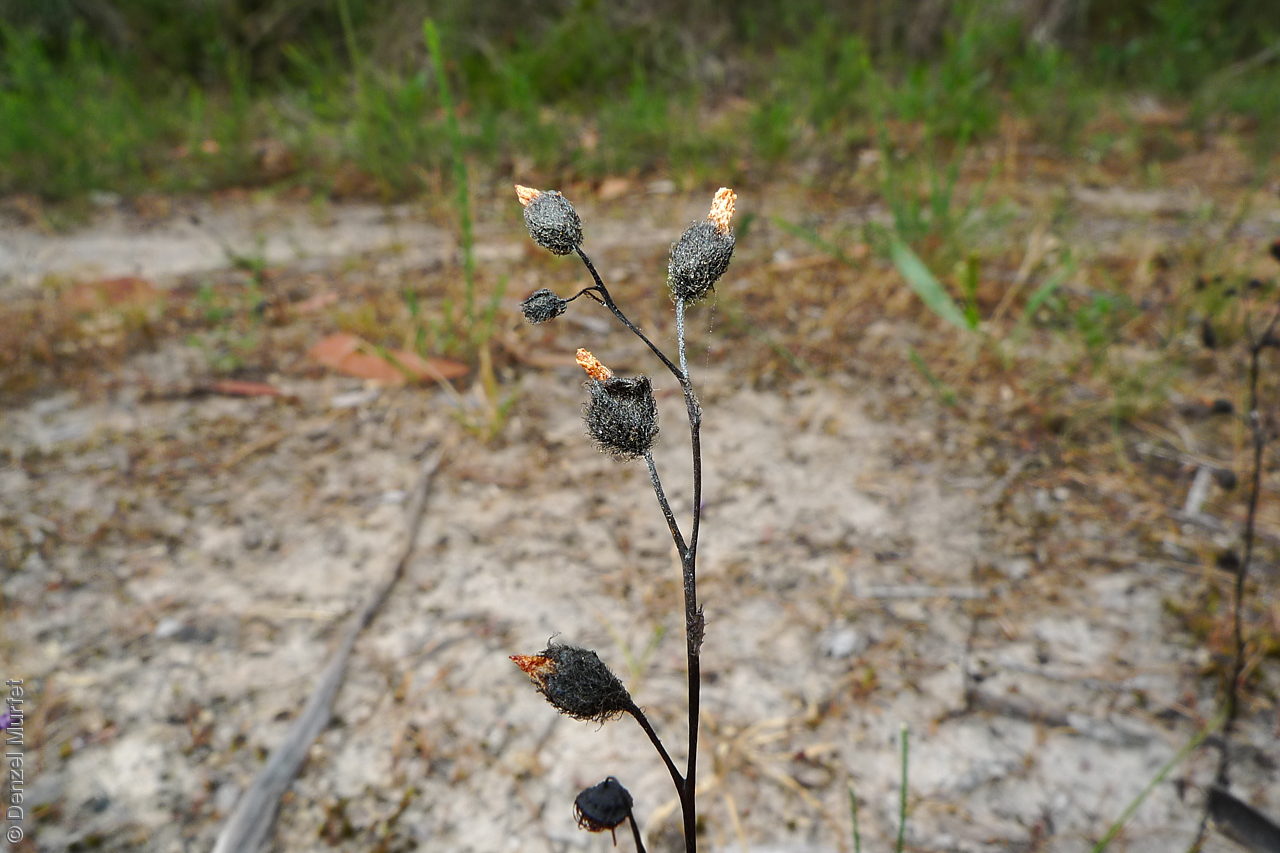
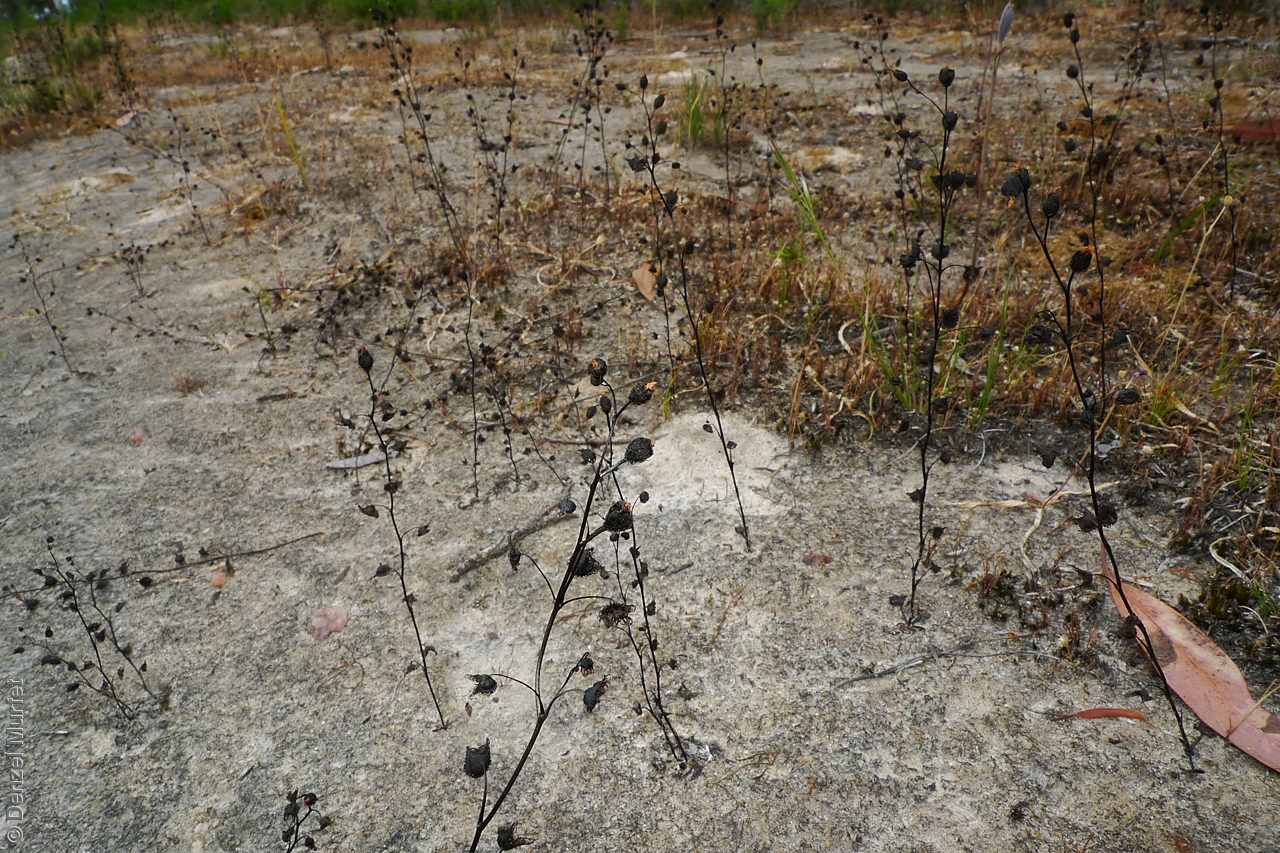
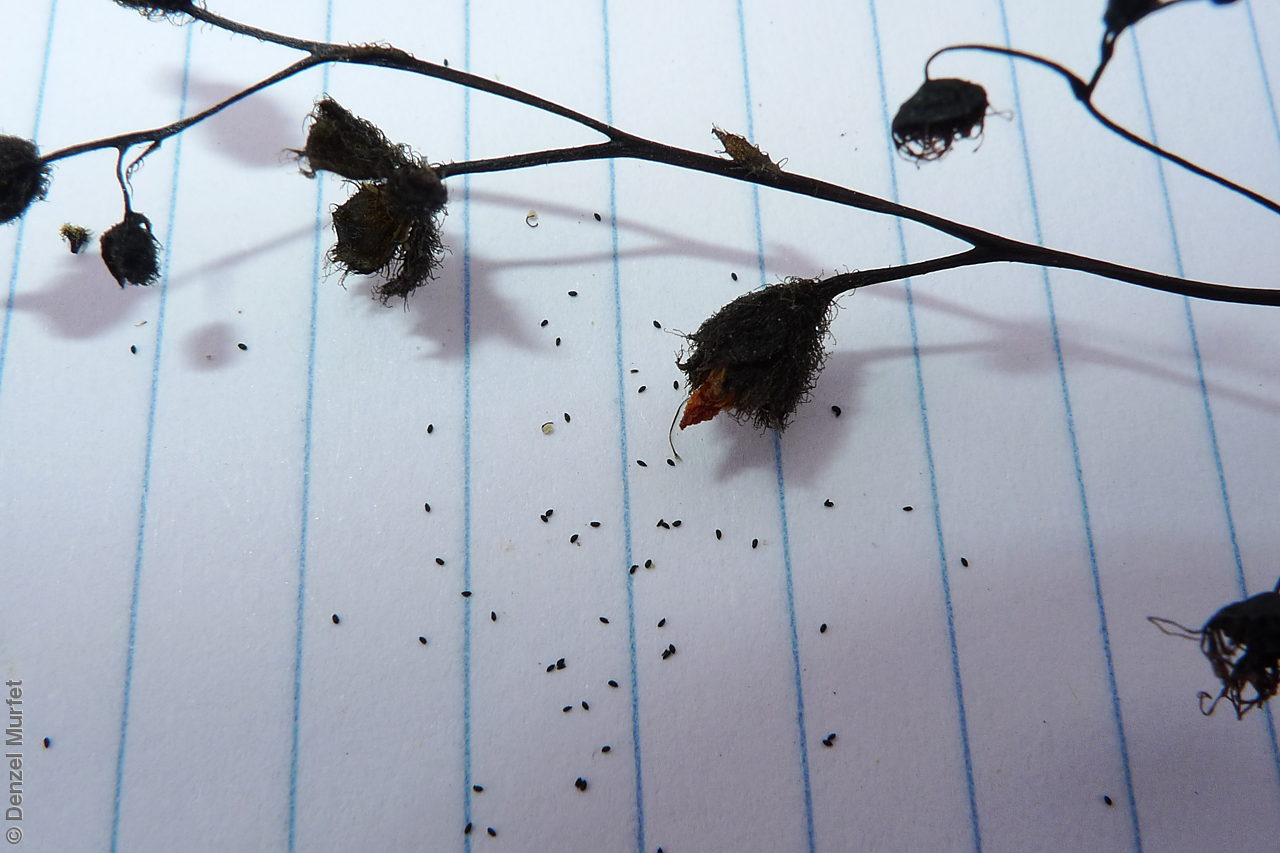
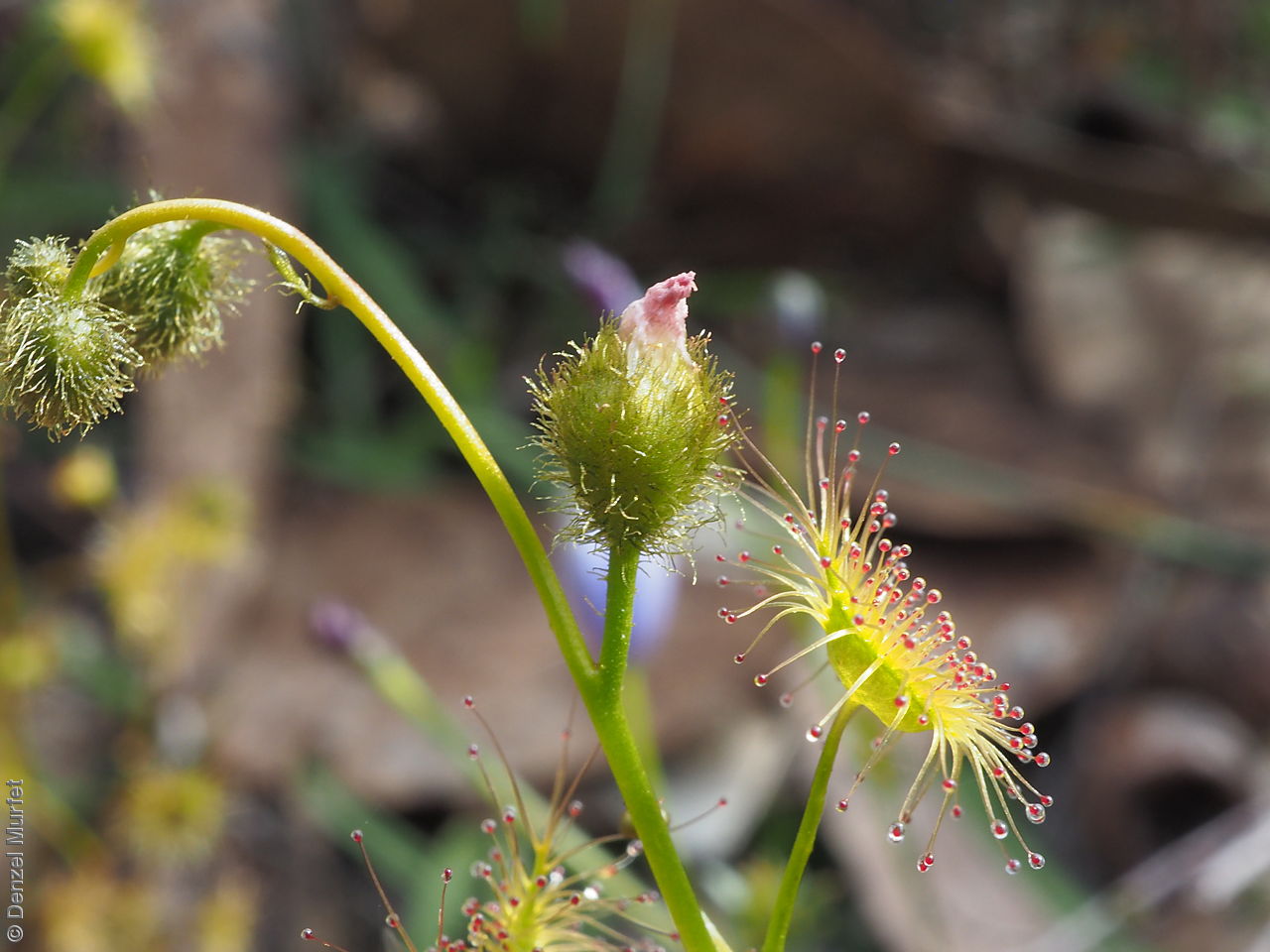

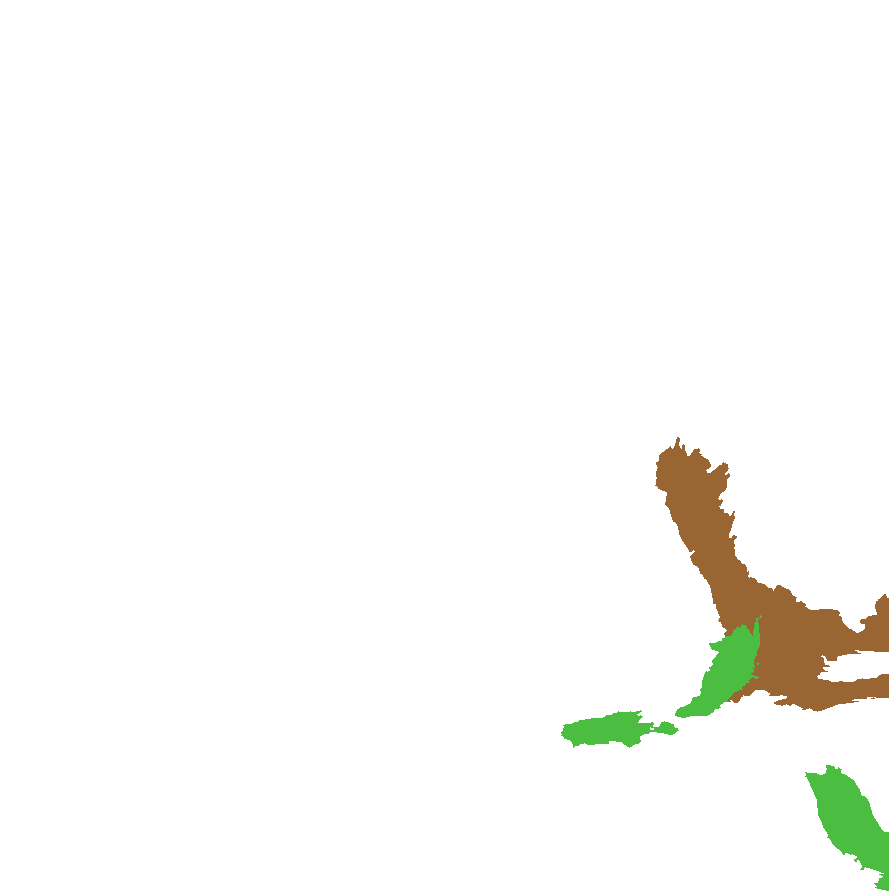
Botanical art
Common names
Pale Sundew
Etymology
Drosera from the Greek 'droseros' meaning dewy; alluding to the glistening of the glandular leaf laminae. Gunniana honours Ronald Campbell Gunn (1808 - 1881), was a South African-born Australian botanist.
Found in the southern part of South Australia from the Flinders Ranges, Mount Lofty Ranges to the lower South-east, growing in moist areas. Also found in New South Wales, Victoria and Tasmania. Native. Common in South Australia. Common in the other states.
Plant description
Erect perennial herb with an erect rhizome arising from a red globose tuber. Rosette leaves soil-appressed, usually present at flowering time, to 10 mm in diameter, semi-orbicular-lunate, not peltate, lower stem leaves often reduced to a petiole with a minute unexpanded lamina, upper leaves yellow-green or reddish, solitary or in groups of 2�4, petiole to 10 mm long, crescentic, auriculate, peltate, to 6 mm in diameter. Inflorescence to 22 mm high, yellow-green or reddish, branching above or rarely with a single branch from the base, sepals green or blackish, to 5 mm long, hairy, margins fimbriate. Petals pink or white, to 7 mm long, obovate. Flowering between August and November. Fruits are brown globose capsule to 6 mm diameter, erect, enclosed in persistent sepals. Seeds are black ovoid seed to 0.6 mm long by 0.3 mm wide, with a mesh-like surface.
Seed collection and propagation
Collect seeds between October and December. Collect mature capsules, those that are fat, hard, turning brown and contain black seeds inside. Place the capsules in a tray and leave to dry for one to two weeks. Then rub the capsules gently by hand to dislodge the seeds. Use a sieve to separate the unwanted material. Store the seeds with a desiccant such as dried silica beads or dry rice, in an air tight container in a cool and dry place. From two collections, the seed viability were high, at 100%.
Distribution and status
Herbarium regions: Flinders Ranges, Northern Lofty, Yorke Peninsula, Southern Lofty, Kangaroo Island, South Eastern, Green Adelaide
AVH map: SA distribution map (external link)